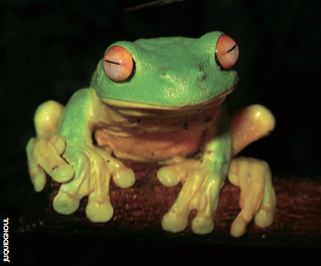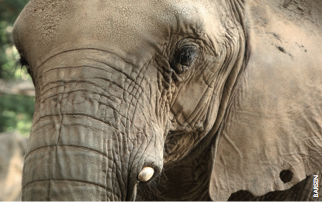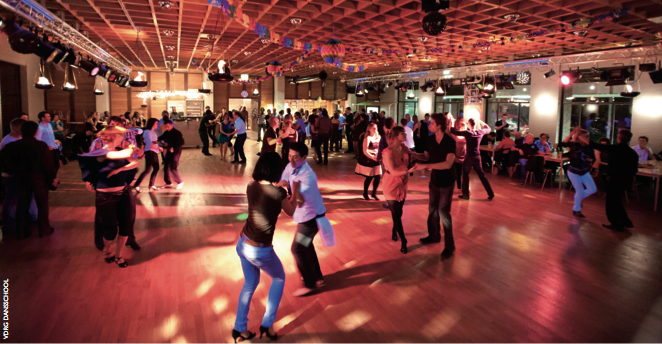WEDNESDAY, 14 MAY 2014
How many times have you shaken your body in a club or a disco? Are you bewitched at the sight of a good dancer, performing on the dance floor or in the TV show ‘Strictly Come Dancing’? Does body shaking fascinate you as it does thousands of people? Indeed, the term ‘body shake’ results in about 660,000 hits on YouTube (which these days seems to account for what’s in Vogue). And I’m sure you will agree that ‘shake/ move your body’ are probably the most repeated lyrics on dance floors. In Michael Jackson’s song ‘Shake your body down to the ground’, these words are repeated around 20 times in the course of three minutes.We humans tend to think we have the monopoly for shaking our body to the sound of rhythmic music, which, let’s face it, we often do in the hope that our debonair moves might impress or seduce others. But are we actually the only species in the world whose social life involves sometimes ‘rocking their bodies’? The answer is no. Many animals shake their bodies in a similar fashion to court potential mates or to impress the competition. So we didn’t invent it. And what’s more, by shaking their bodies ‘down to the ground’, animals can even produce the beating music that goes with the shaking.
Spiders appear to use body shakes a lot. The work of Damien Elias and his colleagues at the University of California, Berkeley, describes the how and why behind the peculiar movements of the jumping spider, Habronattus dossenus, during courtship. The astonishing performance of the courting male cannot leave you insensitive to his charm. The male shakes his body in a flamenco-like manner, to convince the female to copulate with him. The female is attentive to his performance, and if his dance is good enough, she will become receptive and choose him for mating. Before this study was published, the general belief was that spider courtship relied only on visual cues to ‘check out the male’. However, Elias’ study was able to show that the male is in fact performing more
than just body moves. In addition, his shakes produce vibrations in the ground that the female can perceive. So the female is not only looking at the male, she is also sensing the vibrations on the dance floor. In a way, the male spider’s flamenco dance is all-inclusive, and it includes the castanet effect.
Many insects can also move their bodies to ‘show off’. Recently, a group of scientists in the Department of Zoology at the University of Cambridge were surprised to discover that male Drosophila melanogaster (the flies that appear on your fruits if you leave them out for too long) also shake their bellies during courtship. These tiny abdominal shakes make little vibrations in the ground that can be perceived by the female, and indeed help attract her for mating. Many scientists have used these flies to study various biological processes for decades, yet few would have expected that these insects were ‘belly dancers’.
Spiders and flies, however, are not the only ‘Lords of the Dance’ on Earth. When looking at animals that are closer to us in evolutionary terms, researchers found that they also use body shaking in social contexts. For example, Michael Caldwell and his colleagues at Boston University found that red-eyed tree frog males vibrate their whole body to impress and intimidate fellow males on the same plant. Again, they found that these body movements convey aggressive signals by eliciting vibrations in the stem of the plant, the frog’s competitive ‘dance floor’.
What about bigger animals, who may need to communicate over much greater distances? The work of O’Connell-Rodwell and her colleagues at Stanford University has shown that both Asian and African elephants, the biggest mammals walking on Earth, communicate using vibrations on the floor over distances of up to 20 miles. To ‘shake the ground’ and produce these gigantic vibrations, elephants do not need to wriggle about as much as smaller creatures–foot stomps are more than enough. The signals generated seem to convey positional information to other elephants, in order to aid navigation and congregation. So, for elephants this is more like a Harlem Shake that they use to indicate the site of their field party. In addition, elephant rumble vocalisations can also couple with the ground and propagate along the surface of the Earth. If in danger, elephants use all these signals as alarm calls to come together, as Dereck Joubert has observed that predators, such as lions, usually stay clear of large groups. Elephants appear to use bone conduction and specific mechano-receptors on their feet and trunk in order to detect these ground signals. This may explain why you sometimes see an elephant place the tip of his trunk on the floor or lean forward, putting more weight on his front feet.
So in fact body language spans from tiny flies to gigantic elephants. If these animals can communicate this way, surely many more species can too. Reginald Cocroft and Rafael Rodríguez estimated that at least 195,000 species of insects might use such body movements and vibrating signals to communicate. This is in addition to many species of arachnids, crustaceans, worms, frogs and vertebrates. It is therefore no wonder that we hold such a fascination for body shakes, which are clearly a basic and ancient mode of courtship and communication between animals. Would you really have thought that Earth is full of body shaking animals? I bet not. And we are only starting to discover the extent of it. So, in the meanwhile, do like so many in the world out there do, and ‘shake your body down to the ground’!
Caroline Fabre is an EMBO long-term postdoctoral fellow at DPAG Oxford and at the Department of Zoology






